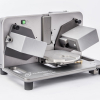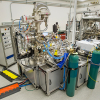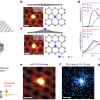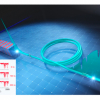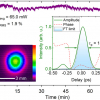
Optical spectrometers play an indispensable role in many scientific and industrial applications, such as material analysis, biological sensing, optical tomography and hyperspectral imaging. Conventional benchtop spectrometers are susceptible to mechanical vibrations and are ill-suited for field deployment outside the laboratory. Integrated spectrometers, which are built with all-solid-state photonic integrated circuits, have advantages of small size, robustness to vibrations and potentially low cost. Nevertheless, most of the reported integrated spectrometers suffer from an inherent trade-off between spectral resolution and operation bandwidth. High spectral resolution requires long optical path length to support sufficient spectral decorrelation, which results in a smaller free-spectral range (FSR).
A team of scientists, led by Professor Hon Ki Tsang from the Department of Electronic Engineering, the Chinese University of Hong Kong, have developed a ground-breaking method that overcomes the resolution-bandwidth limit in chip-scale spectrometry. The proposed scheme is based on a pair of identical tuneable micro-ring resonators (MRR), in which the strong inter-cavity coupling splits each resonant mode into a symmetric mode and an anti-symmetric mode. This unique behaviour resembles the energy-level splitting in a two-level molecule that consists of two atoms. Interestingly, the mode-splitting strength is proportional to the coupling strength. As such, by engineering the dispersion of the “photonic molecule”, the splitting strength will vary throughout the whole bandwidth containing multiple FSRs. When simultaneously tuning two MRRs, each wavelength channel will produce a distinct scanning trace, making it possible to reconstruct any unknown input spectrum.
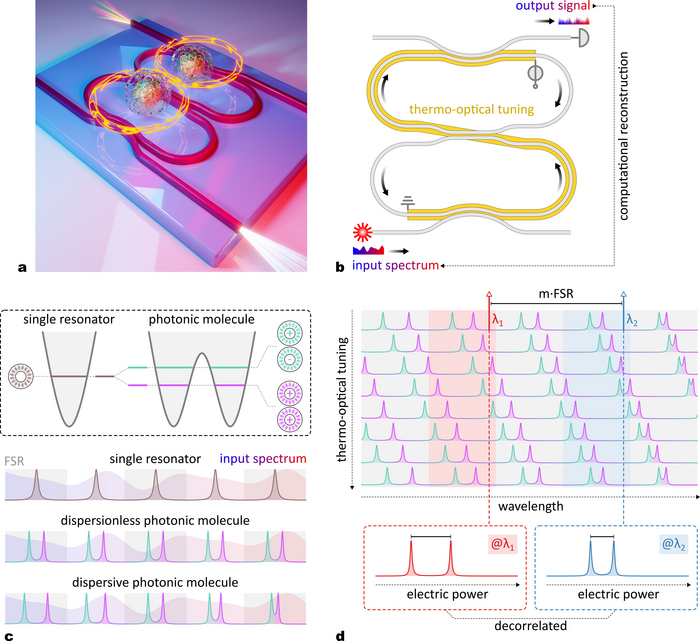
a Artist’s view of the integrated spectrometer using a dispersion-engineered photonic molecule. b The structure consists of two identical tuneable micro-ring resonators. The unknown input spectrum is scanned via thermo-optical tunning to generate an output signal. The goal is to restore the spectral information from the signal with a calibrated transmission matrix. c For a single resonator, the information at different free-spectral ranges (FSR) are indistinguishable. If a pair of resonators are strongly coupled, then each resonance will split into a symmetric mode and an anti-symmetric mode, which resembles a two-level molecule. Furthermore, the splitting strength is proportional to the coupling strength between resonators. Consequently, by tailoring the dispersion, the splitting strength will vary over multiple FSRs. d For two wavelengths spaced by a integral multiple of FSRs (λ₂ = λ₁ + m∙FSR), their power scanning traces can be identified from the distinct peak spacing induced by the dispersive mode splitting. In this way, all wavelength channels are decorrelated, making it possible to reconstruct the spectrum beyond the FSR limit. Credit: Hongnan Xu, Yue Qin, Gaolei Hu and Hon Ki Tssang
In the experiment, numerous test spectra with diverse complex features are retrieved using the photonic-molecule scheme. The demonstrated spectral resolution is 40 pm throughout a bandwidth of 100 nm. Remarkably, high reconstruction precision can be maintained even with the presence of thermal noises.
“Our spectrometer is a novel approach to capture a broadband spectrum with high spectral resolution. It relies solely on a pair of coupled resonators. The device has very low power consumption and is compatible with the mainstream nanophotonic fabrication technology.”
“The spectrometer is based on the mode splitting in coupled resonators. This phenomenon is analogous to the energy level splitting in a molecule with two atoms. Our design features a simple configuration and a small size, so that it can be densely packed with other devices. We believe that this approach has the potential to be applied in future handheld or even wearable spectroscopic sensors.”










